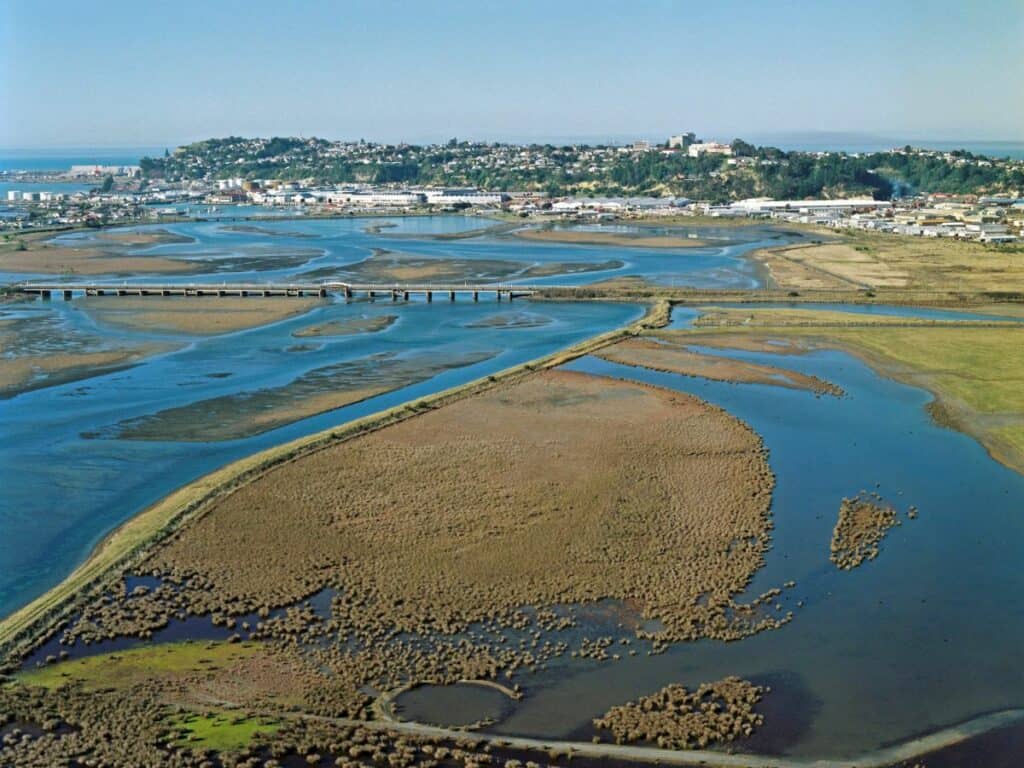I’ve seen this destruction before. Napier, Wairoa, Gisborne completely cut off. Pōrangahau, Tutira, Ruatoria – no word from small towns across the North Island’s east coast. No water, no power, no comms, no road access. Other major cities severely compromised at the same time. People dead and missing. Not in real life. Not in a nightmare. But in my best attempt to imagine the impacts of a magnitude 9 earthquake on the Hikurangi subduction zone.
In a subduction earthquake, flooding will come as a tsunami instead of heavy rain, damage will come from ground shaking rather than water-borne debris – there are differences of course – but Cyclone Gabrielle has painted a strikingly accurate picture of the magnitude of chaos. Devastatingly, it’s not a picture, it’s real life.
Now is not the time to be anticipating a megathrust earthquake in New Zealand – we’re in emergency response mode. But now is definitely the time to be stacking up reasons for taking a radically different approach to rebuilding our towns.
Earthquakes may have been the biggest, scariest natural hazard prospect for driving improved resilience across the country, but extreme weather events are now a bigger challenge because of their climate-change-induced increasing frequency and intensity. The good news is that by proactively managing the likely impacts of climate change, we also improve resilience to earthquakes and other hazards. In fact, if we want to reduce risk rather than react to it, we must take a multi-hazard approach to solutions.
Let this be our opportunity. Our chance to step back and think about where it’s sensible to live in this country. I believe in engineering and its ability to keep us safe, but as a geologist, I know there’s a simpler, more fundamental consideration before we turn to human intervention.
Look to the land itself – it has all the answers. Flat land on a valley floor is a flood plain. No matter how small the river is most of the time, it will be capable of filling the valley wall-to-wall occasionally because that is how the valley formed. Steep cliffs or banks are hills that have been cut into from below by the sea or rivers or faults (or by people to make roads). They will erode slowly and occasionally collapse in landslides because that is how they were formed. Wetlands or estuaries that have been drained will liquefy in earthquakes because they were made from wet mud. Storm ridges above a beach will be inundated by the sea occasionally because that is how they were formed. Rock type and shape of the land should be our primary guide for where and how to live.
There’s a long legacy of poor land use to overcome, but the early history had innocent beginnings. Mana whenua and early settlers needed to live close to sheltered harbours and sources of water and kai. As settlements grew, it made sense to expand out from the original positions. There is no one to blame for the sometimes-treacherous locations of our towns and cities.
What is unforgivable in recent times is the approval for new buildings to go up on land known to be prone to floods, sea level rise, landslides, liquefaction, tsunamis and fault rupture. How is this happening?! Yes, we have a shortage of housing, but we also have ample land that hasn’t been formed by geological calamities.
Intelligent land use starts with the make-up of the land, and considers timeframes longer than living memory. River valleys are perfect places for farming and horticulture. Clifftops and beach ridges are great for walkways and lookouts. But do we want permanent dwellings in harm’s way? Do we really want people subjected to the danger and heartache we’ve witnessed in recent weeks?
Ground can be improved. Structures can be strengthened. Stopbanks can be built higher. We can stay in the same places if we invest in appropriate engineering solutions. But the destruction wrought by Cyclone Gabrielle means that some settlements will be almost starting from scratch. Isn’t that the best time to rethink? Let’s give our rivers more space, keep away from landslide-prone hills and rebuild around the safer edges of existing settlements. Visionary leadership will be required, as will hard work to figure out the financially-viable, legal, community-enhancing and equitable way to do this, but people are worth it.
As we did geological fieldwork in peaceful Hawke’s Bay valleys full of orange orchards and asparagus fields, we tried to imagine the chaos we were finding evidence for. Sediments beneath Ahuriri (Napier), Pakuratahi (next to Esk Valley), and Wairoa Lagoons show a history of uplift, subsidence, tsunamis and floods. When sites further south were also investigated, it became clear that a great earthquake was a rare but realistic possibility for the North Island’s east coast.
East Coast Lab was vital for translating this science into action. Hikurangi Response Planning was born. Deaths and injuries are anticipated to be in the thousands for a magnitude 8.9 earthquake, but otherwise the plan outlines a similar situation to what is before us – extensive damage to buildings, water supply, transport networks, power, communications, medical facilities, marae, emergency coordination centres, farmland and businesses. This plan demonstrates how much overlap there is in the devastation inflicted by different hazards, strengthening the case for an all-hazards approach to future mitigation measures.
Hawke’s Bay and Tairāwhiti civil defence emergency management groups, hapū of Ngāti Kahungunu, Ngāti Porou, essential service providers, many businesses, community groups and individuals will have planned for an event as extreme as Cyclone Gabrielle. They are doing an exceptional job responding in incredibly challenging circumstances.
Remember, though, we are all part of the emergency response. In any disaster zone, the best first responders are those already on the ground – you and your neighbours. Emergency management teams within councils are tiny. They rely on trained volunteers and councillors to help in an emergency, and they call in support from other agencies. These responders need time to mobilise and gain access in difficult circumstances. There is no magical fleet to arrive at your door immediately. There is no silver bullet technology. Locals helping locals is usually the only way – just as we have seen in such brave and innovative ways these last few weeks.
Hence the need to know your hazards and be prepared. Then you can self-evacuate in time, have basic needs met in the first weeks after an emergency, help others or be helped before officials arrive. Although nearly 90% of New Zealanders know it’s their responsibility to look after themselves and their family in a disaster, only 13% of people have taken all the recommended preparedness actions. If you find it daunting preparing for the worst, do it with others, imagine you’re packing for a remote camping trip, and you’ll end up with the right kit.
While personal and community preparedness is essential, there are weak links higher up the chain. At the top of the chain, of course, is the need to halt climate change. Further down the chain is the need to avoid the impacts of climate change and other natural hazards – there are limited options here but building on safe land is a crucial starting point. Then comes minimising or controlling the impacts – this is where engineering (of buildings, infrastructure, protection measures) has a big role to play. We also need more time and resources put into preparedness at central and local government level. But let’s not go too much further down the chain or we get to accepting the impacts and finding ourselves stuck in the cycle of emergency response we’re tired of.
To save ourselves from the trials of the bottom of the chain, New Zealand needs an urgent switch to prioritising work at the top of the chain. The current restructure of the Resource Management Act has the power to make this transformation if natural hazard risk is considered collectively and prioritised appropriately. The prime minister is sounding determined to “build back better”. So right now, in the immediate rebuilding from recent events, let’s look to the land for safe places to live.

